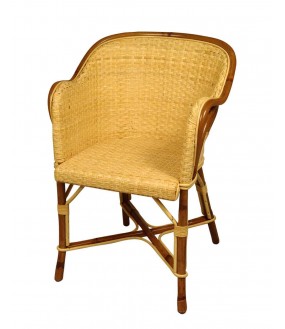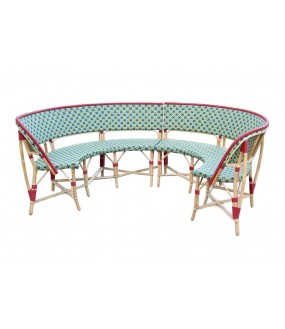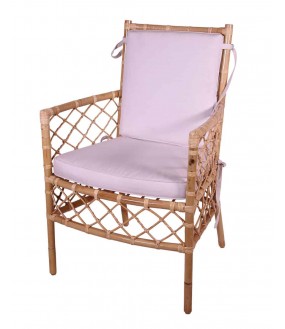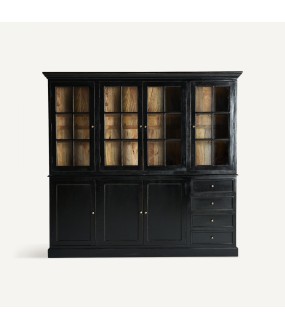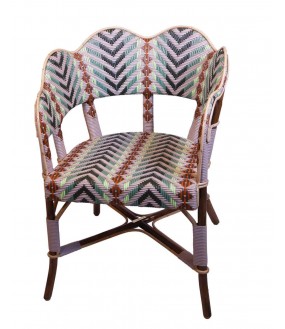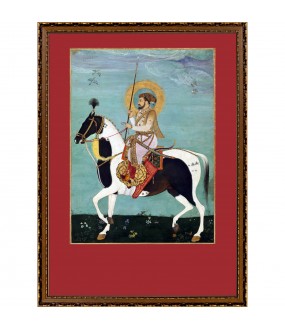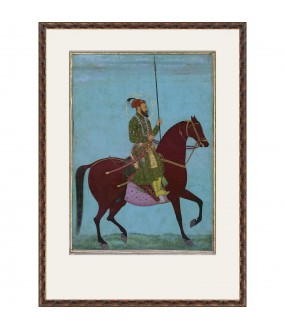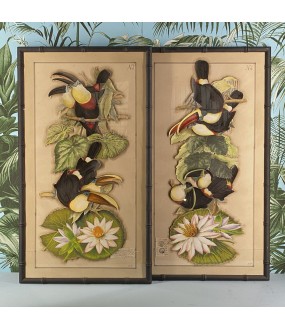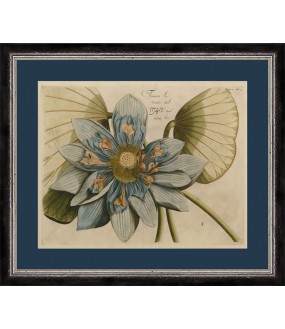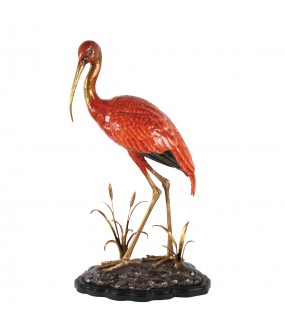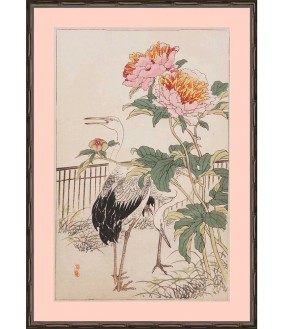DESIGN & TRADE SERVICES
Interior Decoration Service for Individuals and Professionals.
Contact: Héloïse CARDI - Tel: +33 (0) 160 440 129
Founded in 2010 by Héloïse Cardi, Arteslonga claims: "To Exist is a Fact, to Live is an Art" and likes to explore and makes styles and eras meet in a desire for harmony and softness.
" The most cherished wish of Arteslonga is to bring beauty and a perpetual and benevolent harmony in your interior decoration so that you can achieve well-being in your place of life or work. Only true understanding, deep vision of things, the right view, and the diligence in creation and execution can enable this invaluable quest to be achieved: joy and well-being. "
Héloise Cardi - Founder and Artistic Director of Arteslonga - Interior Decorator.
We are here to guide you.
We know that changing your style can be a challenge, but whether you need help designing a completely new home or you do not know which sofa to choose or the perfect color for your bedroom, we're here to guide you .
Send us an inquiry or contact us: contact@arteslonga.com - Tel: +33 (0) 1 60 44 01 29 and we will organize a telephone appointment with you whenever you wish.
1 - The first step is to understand your wishes and what you want to achieve in your space.
We can visit you at home or you can send us your plans and photos. In this way, we can discover your tastes and priorities and take into account any relevant information about you and your home.

Interior Decoration Mood Board by Arteslonga
2 - Following our first exchange, we will make suggestions and recommendations to make the most of your space and integrate your ideas.

Interior Decoration Mood Board by Arteslonga
s)%202.jpg)
Interior Decoration Mood Board by Arteslonga
3 - We will also explore the materials and make a selection of furniture and decorative accessories from the house Arteslonga.
s).jpg)
Interior Decoration Mood Board by Arteslonga
4 - When you are 100% satisfied with your new interior, we will place an order for your selection of furniture and decorative items.
Our professional service team will deliver and position your furniture.

Interior Decoration Mood Board by Arteslonga
5- La réalisation de vos travaux de décoration.
Nous pouvons gérer et coordonner la bonne réalisation de vos travaux de décoration.
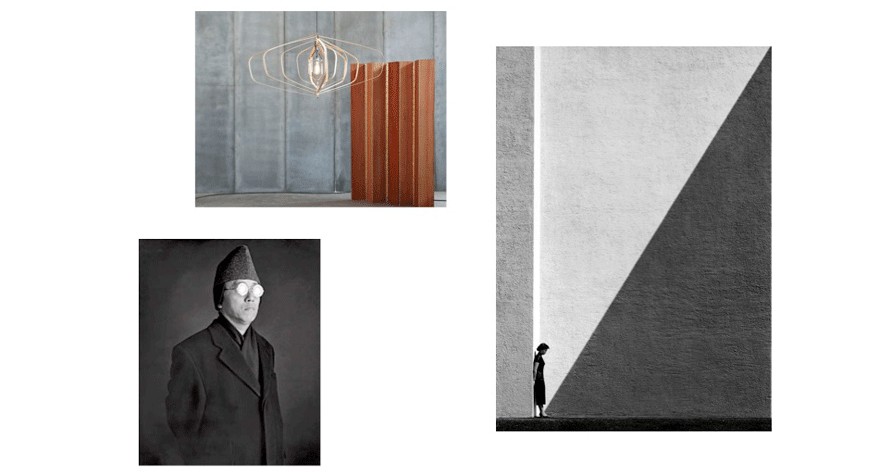
---
For more information about our decor ambiences, vintage interiors styles, retro home decoration ideas, art decoration, please click here.
Arteslonga, French vintage home decoration and lifestyle house offers exclusive vintage homeware, vintage decoration ideas, inventive atmosphere and styles in a retro and vintage style.
As an art gallery, vintage decorative objects and vintage furniture selected by Arteslonga are available in single sale within unique vintage home ambiences and vintage styles.
Arteslonga goes beyond a vintage decoration and retro furniture shop by offering constantly renewed vintage home ambiences.
All our vintage and retro furniture and objects are available through several decoration atmospheres mixing retro decoration, exquisite ambiences in vintage styles, as, for example, the atmosphere of an artist's studio or a Venetian Italian lounge, the seaside atmosphere in Britany or Saint Tropez in the 70s, a poetic room in Languedoc, a romantic alcove in Provence, or an oriental vintage atmosphere in Marocco…
All these creations are exclusive achievements signed by the artistic direction of Arteslonga.
Arteslonga is a vintage and retro home decoration shop which provides an endless source of vintage interiors ideas. Arteslonga will bring to you several and unique vintage interiors atmospheres by mixing eras, styles, colors and materials. Arteslonga is constantly renewing its offer to provide you with unique items, rare, authentic, unusual, useful to create a unique ambience and style.
You wander romantic and glamorous stagings, French knowledge, always at the forefront of the trend.
These vintage and retro home ambiences will give you an idea of the decorative possibilities for your home in a retro, vintage or shabby chic style.
Looking for vintage or retro style decorating ideas for your room? Visit the different moods of interior design to find your ideas.
Go through the artist's studio and the Italian lounge and take a rest in the poetic room Napoleon III style. Escape to the Eastern world and hide in the romantic alcove.
Stroll along the seaside and meet the fisherman's wife ...
Arteslonga, a gallery of vintage art decoration mixing styles and eras.
"To exist is a fact, Living is an Art."
Arteslonga, French Home Decoration and Lifestyle House.
Active filters
- - Style: Carnet de Voyages XIXth
-
Large Rattan Armchair Vintage Style 1900's
€800.00Imposing armchair in vintage style but light, entirely woven with natural lamina, it can be woven "to measure" in synthetic fibre.
Available from stock, price on request.
This natural fiber armchair.
This large rattan armchair will embellish your kitchen, your living room, your terrace, your veranda or your restaurant.
Overall height: 80cm
Overall width: 64cm
Overall depth: 62cm
Weight: 7kg
Seat height: 45cm
Seat width: 43 cm wide seat
Indoor/Outdoor: Indoor (this furniture must absolutely remain dry.)
Colors: Cannage Natural blade
Stackability: Not stackable
Material: Light Rattan (Manila)
Fiber: Natural Blade
Finish: Glossy varnish
Possibility of weaving the Cruise line armchair in your colors, a made-to-measure production with the color of caning and the weaving of your choice (see photos).
Rattan, a material with extraordinary properties with limits. Rattan is a vine of the Palm race, which grows in very humid or even swampy equatorial forests.
With its siliceous skin like glass, this extremely solid and light vine is particularly resistant to humidity, as are tropical woods, teak or others.
But this resistance has its limits. Exposed to rain, rattan resists very well for a whole day or even a few days. But if this rain continues for too many hours, the humidity will gradually penetrate the Rattan, and day after day the material kept damp will end up slowly degrading and losing its resistance qualities.
The physical limits of rattan imply precautions for use. On the terraces of Parisian cafes, the chairs can last for decades while they are often in the rain all day for long periods. But they are piled up every night under cover and can thus dry out.
More generally, rattan can withstand rain for long hours without compromising its longevity, but must be able to dry regularly.
In practice, rattan furniture can stay outside throughout the "summer season", the weather is hot and rather dry, continuous rains exceptionally last more than three or four days and Rattan withstands such rains without degrading.
But as soon as the season advances, the temperature drops, there is a lot of condensation and humidity, the Rattan will gradually become humid, the long and heavy rains accentuating this degradation. In practice, these are sensitive situations by the sea.
It is then imperative to put the seats under shelter, a ventilated shelter to avoid progressive humidification as soon as the "bad season" arrives, in practice from mid-October to mid-March for a continental climate.
The alternative if you want to use your Rattan furniture all year round, is to put it away daily, every evening, as Parisian terraces do.
In summary, 2 main principles to respect:
During the winter season (October 15 to March 15 in Europe) in all climates: the furniture must be stored “dry”. It can however be left outside during the day, but must imperatively be put in the dry during the night.
During the "beautiful season", the rest of the time, the Rattan can remain permanently outside.
However, if a lasting rain arrives, the Rattan should only be left in this rain for two or three days at the most, before drying the furniture to
so that it can dry out. He only takes it out once the rain has stopped (In any case, a terrace cannot be used in the rain).
-
Magnificent Rattan Chair, Made on Order
€1,398.00Superb handcrafted rattan chair, made on demand.
This cane chair is ideal for your terrace, in your garden but also for your interior.
Very comfortable, this exceptional rattan chair is light and very resistant.
This chair will beautify your living room, your kitchen, your terrace, your veranda or your restaurant.
A magnificent French craftsmanship, this chair is entirely handmade.
Type: chair with wide seat 43cm
Stackability: Not stackable
Indoor/Outdoor: Indoor, Outdoor friendly
Fiber: Satin (Raucord)
Structure materials: Dark rattan (Malacca)
Weaving range: exceptions
Colours: Satin Beige – Pantone 7502, Satin Ultramarine Blue – Pantone 534, Satin Royal Blue, Satin Terracotta, Satin Olive Green – Pantone 5743
Seat height: 45cm
Seat width: Wide seat
Overall height: 81cm
Overall width: 58cm
Overall depth: 63cm
Weight: 7kg
Varnish and paint: Varnish
Rattan, a material with extraordinary properties with limits.
Rattan is a vine of the Palm race, which grows in very humid or even swampy equatorial forests.
With its siliceous skin like glass, this extremely solid and light vine is particularly resistant to humidity, as are tropical woods, teak or others.
But this resistance has its limits. Exposed to rain, rattan resists very well for a whole day or even a few days. But if this rain continues for too many hours, the humidity will gradually penetrate the Rattan, and day after day the material kept damp will end up slowly degrading and losing its resistance qualities.
The physical limits of rattan imply precautions for use. On the terraces of Parisian cafes, the chairs can last for decades while they are often in the rain all day for long periods. But they are piled up every night under cover and can thus dry out.
More generally, rattan can withstand rain for long hours without compromising its longevity, but must be able to dry regularly.
In practice, rattan furniture can stay outside throughout the "summer season", the weather is hot and rather dry, continuous rains exceptionally last more than three or four days and Rattan withstands such rains without degrading.
But as soon as the season advances, the temperature drops, there is a lot of condensation and humidity, the Rattan will gradually become humid, the long and heavy rains accentuating this degradation. In practice, these are sensitive situations by the sea.
It is then imperative to put the seats under shelter, a ventilated shelter to avoid progressive humidification as soon as the "bad season" arrives, in practice from mid-October to mid-March for a continental climate.
The alternative if you want to use your Rattan furniture all year round, is to put it away daily, every evening, as Parisian terraces do.
In summary, 2 main principles to respect:
During the winter season (October 15 to March 15 in Europe) in all climates: the furniture must be stored “dry”. It can however be left outside during the day, but must imperatively be put in the dry during the night.
During the "beautiful season", the rest of the time, the Rattan can remain permanently outside.
However, if a lasting rain arrives, the Rattan should only be left in this rain for two or three days at the most, before putting the furniture in the dry place so that it can dry. He only takes it out once the rain has stopped (In any case, a terrace cannot be used in the rain).
-
Superb Rattan Half Moon Bench, Made to Order
Superb bench in the shape of a half moon in woven rattan is made exclusively to measure. This magnificent bench will contribute to the general atmosphere of your interior or exterior ambiance.
Handcrafted rattan bench, made to order.
Price upon request.
This marvelous cane bench is ideal for your terrace, in your garden but also for your interior.
Very comfortable, this bench is light and very resistant.
A magnificent French craftsmanship, the Guinguette bench is entirely handmade.
Custom seat.
Stackability: not stackable
Indoor/Outdoor: Semi-outdoor
Fiber: Brilliant (Rilsan)
Colours: Gloss Bordeaux, Gloss Yellow, Gloss Putty
Structure materials: Light rattan (Manila)
Weaving range: prestige
Seat height: 45cm
Overall height: custom
Overall width: custom
Overall depth: custom
Varnish and paint: Varnish
Rattan, a material with extraordinary properties with limits.
Rattan is a vine of the Palm race, which grows in very humid or even swampy equatorial forests.
With its siliceous skin like glass, this extremely solid and light vine is particularly resistant to humidity, as are tropical woods, teak or others.
But this resistance has its limits. Exposed to rain, rattan resists very well for a whole day or even a few days. But if this rain continues for too many hours, the humidity will gradually penetrate the Rattan, and day after day the material kept damp will end up slowly degrading and losing its resistance qualities.
The physical limits of rattan imply precautions for use. On the terraces of Parisian cafes, the chairs can last for decades while they are often in the rain all day for long periods. But they are piled up every night under cover and can thus dry out.
More generally, rattan can withstand rain for long hours without compromising its longevity, but must be able to dry regularly.
In practice, rattan furniture can stay outside throughout the "summer season", the weather is hot and rather dry, continuous rains exceptionally last more than three or four days and Rattan withstands such rains without degrading.
But as soon as the season advances, the temperature drops, there is a lot of condensation and humidity, the Rattan will gradually become humid, the long and heavy rains accentuating this degradation. In practice, these are sensitive situations by the sea.
It is then imperative to put the seats under shelter, a ventilated shelter to avoid progressive humidification as soon as the "bad season" arrives, in practice from mid-October to mid-March for a continental climate.
The alternative if you want to use your Rattan furniture all year round, is to put it away daily, every evening, as Parisian terraces do.
In summary, 2 main principles to respect:
During the winter season (October 15 to March 15 in Europe) in all climates: the furniture must be stored “dry”. It can however be left outside during the day, but must imperatively be put in the dry during the night.
During the "beautiful season", the rest of the time, the Rattan can remain permanently outside.
However, if a lasting rain arrives, the Rattan should only be left in this rain for two or three days at the most, before putting the furniture in the dry place so that it can dry. He only takes it out once the rain has stopped (In any case, a terrace cannot be used in the rain).
En savoir plus sur ce texte sourceVous devez indiquer le texte source pour obtenir des informations supplémentaires
Envoyer des commentaires
Panneaux latéraux
-
Natural Woven Rattan Armchair 1920s
€1,188.00This rattan armchair, all woven in natural slats, is a great vintage classic for the garden, terrace, veranda from the 1920s. Supplied with its seat cushions.
We love its retro style from the banks of the Marne in the 1900s. As beautiful inside as it is outside, this armchair will enhance your kitchen, your living room, your terrace, your veranda or your restaurant.
This natural woven rattan armchair should be kept out of the rain.
A magnificent French craftsmanship, this caned rattan armchair is entirely handmade.
Overall height: 95 cm
Overall width: 61cm
Overall depth: 78cm
Weight: 7kg
Seat height: 45cm
Seat width: Wide seat 43cm
Indoor/Outdoor: Indoor only
Stackability: Not stackable
Material: Light Rattan (Manila)
Colors: natural fiber
Rattan is a material with extraordinary properties with limits. Rattan is a vine of the Palm race, which grows in very humid or even swampy equatorial forests.
With its siliceous skin like glass, this extremely solid and light vine is particularly resistant to humidity, as are tropical woods, teak or others.
But this resistance has its limits. Exposed to rain, rattan resists very well for a whole day or even a few days. But if this rain continues for too many hours, the humidity will gradually penetrate the Rattan, and day after day the material kept damp will end up slowly degrading and losing its resistance qualities.
The physical limits of rattan imply precautions for use. On the terraces of Parisian cafes, the chairs can last for decades while they are often in the rain all day for long periods. But they are piled up every night under cover and can thus dry out.
More generally, rattan can withstand rain for long hours without compromising its longevity, but must be able to dry regularly.
In practice, rattan furniture can stay outside throughout the "summer season", the weather is hot and rather dry, continuous rains exceptionally last more than three or four days and Rattan withstands such rains without degrading.
But as soon as the season advances, the temperature drops, there is a lot of condensation and humidity, the Rattan will gradually become humid, the long and heavy rains accentuating this degradation. In practice, these are sensitive situations by the sea.
It is then imperative to put the seats under shelter, a ventilated shelter to avoid progressive humidification as soon as the "bad season" arrives, in practice from mid-October to mid-March for a continental climate.
The alternative if you want to use your Rattan furniture all year round, is to put it away daily, every evening, as Parisian terraces do.
In summary, 2 main principles to respect:
During the winter season (October 15 to March 15 in Europe) in all climates: the furniture must be stored “dry”. It can however be left outside during the day, but must imperatively be put in the dry during the night.
During the "beautiful season", the rest of the time, the Rattan can remain permanently outside.
However, if a lasting rain arrives, the Rattan should only be left in this rain for two or three days at the most, before putting the furniture in the dry place so that it can dry. He only takes it out once the rain has stopped (In any case, a terrace cannot be used in the rain).
-
Library Edgard XIXth Style, Double Body
€5,280.00The large Edgard library consists of a double body and has the particularity of having an apothecary style from the beginning of the 19th century.
This large bookcase, made entirely of solid mango wood, is made up of 2 independent modules, top (dresser cabinet) and bottom (sideboard), which will dress your interior in a majestic way.
The two upper and lower parts can be offered for sale separately.
The aged black patina and its solid old mango wood interior give it an old look as if it had come out of a natural history museum.
The complete piece of furniture (upper and lower part) measures 430cm high by 218cm wide by 42cm deep. Total weight 170kg.
Dimensions of the upper glazed part which consists of 4 doors and 4 shelves:
Length: 218cm - Depth: 42cm - Height: 113cm
Dimensions of the lower part which consists of a single block of 4 doors and 4 drawers:
Length: 212cm - Depth: 40cm - Height: 92cm
This large bookcase will also go very well with an industrial style.
Delivery on the ground floor only.
For upstairs delivery, please contact us.
-
Rattan Armchair Green, Made On Order
€1,780.00The Gabrielle chair. Superb handcrafted armchair in woven rattan.
Manufacturing on demand.
Welcoming with its fully woven backrest and its generous shapes, the Gabrielle armchair is an armchair for restaurants, bistros, cafés, gardens or dining rooms in woven rattan in the colors of your desires, non-stackable and is as beautiful inside as it is outside.
Very comfortable, the Gabrielle armchair is light and very resistant.
This armchair will beautify your living room, your kitchen, your terrace, your veranda or your restaurant.
A magnificent French craftsmanship, the Gabrielle armchair is entirely handmade.
Type: chair with wide seat 43cm
Stackability: Not stackable
Indoor/Outdoor: Semi-Outdoor
Fiber: Satin (Raucord)
Colours: Satin Beige – Pantone 7502, Satin Ultramarine Blue – Pantone 534, Satin Royal Blue, Satin Terracotta, Satin Olive Green – Pantone 5743
Structure materials: Dark rattan (Malacca)
Weaving range: exceptions
Colours: Satin Beige – Pantone 7502, Satin Ultramarine Blue – Pantone 534, Satin Royal Blue, Satin Terracotta, Satin Olive Green – Pantone 5743
Seat height: 45cm
Seat width: Wide seat (43 cm).
Overall height: 81cm
Overall width: 58cm
Overall depth: 63cm
Weight: 7kg
Varnish and paint: Varnish
Rattan, a material with extraordinary properties with limits.
Rattan is a vine of the Palm race, which grows in very humid or even swampy equatorial forests.
With its siliceous skin like glass, this extremely solid and light vine is particularly resistant to humidity, as are tropical woods, teak or others.
But this resistance has its limits. Exposed to rain, rattan resists very well for a whole day or even a few days. But if this rain continues for too many hours, the humidity will gradually penetrate the Rattan, and day after day the material kept damp will end up slowly degrading and losing its resistance qualities.
The physical limits of rattan imply precautions for use. On the terraces of Parisian cafes, the chairs can last for decades while they are often in the rain all day for long periods. But they are piled up every night under cover and can thus dry out.
More generally, rattan can withstand rain for long hours without compromising its longevity, but must be able to dry regularly.
In practice, rattan furniture can stay outside throughout the "summer season", the weather is hot and rather dry, continuous rains exceptionally last more than three or four days and Rattan withstands such rains without degrading.
But as soon as the season advances, the temperature drops, there is a lot of condensation and humidity, the Rattan will gradually become humid, the long and heavy rains accentuating this degradation. In practice, these are sensitive situations by the sea.
It is then imperative to put the seats under shelter, a ventilated shelter to avoid progressive humidification as soon as the "bad season" arrives, in practice from mid-October to mid-March for a continental climate.
The alternative if you want to use your Rattan furniture all year round, is to put it away daily, every evening, as Parisian terraces do.
In summary, 2 main principles to respect:
During the winter season (October 15 to March 15 in Europe) in all climates: the furniture must be stored “dry”. It can however be left outside during the day, but must imperatively be put in the dry during the night.
During the "beautiful season", the rest of the time, the Rattan can remain permanently outside.
However, if a lasting rain arrives, the Rattan should only be left in this rain for two or three days at the most, before putting the furniture in the dry place so that it can dry. He only takes it out once the rain has stopped (In any case, a terrace cannot be used in the rain).
En savoir plus sur ce texte sourceVous devez indiquer le texte source pour obtenir des informations supplémentaires
Envoyer des commentaires
Panneaux latéraux
-
Magnificent Green Rattan Chair, Made on Order
€1,398.00Superb handcrafted rattan chair, made on demand.
This cane chair is ideal for your terrace, in your garden but also for your interior.
Very comfortable, this exceptional rattan chair is light and very resistant.
This chair will beautify your living room, your kitchen, your terrace, your veranda or your restaurant.
A magnificent French craftsmanship, this chair is entirely handmade.
Type: chair with wide seat 43cm
Stackability: Not stackable
Indoor/Outdoor: Indoor, Outdoor friendly
Fiber: Satin (Raucord)
Structure materials: Dark rattan (Malacca)
Weaving range: exceptions
Colours: Satin Beige – Pantone 7502, Satin Ultramarine Blue – Pantone 534, Satin Royal Blue, Satin Terracotta, Satin Olive Green – Pantone 5743
Seat height: 45cm
Seat width: Wide seat
Overall height: 81cm
Overall width: 58cm
Overall depth: 63cm
Weight: 7kg
Varnish and paint: Varnish
Rattan, a material with extraordinary properties with limits.
Rattan is a vine of the Palm race, which grows in very humid or even swampy equatorial forests.
With its siliceous skin like glass, this extremely solid and light vine is particularly resistant to humidity, as are tropical woods, teak or others.
But this resistance has its limits. Exposed to rain, rattan resists very well for a whole day or even a few days. But if this rain continues for too many hours, the humidity will gradually penetrate the Rattan, and day after day the material kept damp will end up slowly degrading and losing its resistance qualities.
The physical limits of rattan imply precautions for use. On the terraces of Parisian cafes, the chairs can last for decades while they are often in the rain all day for long periods. But they are piled up every night under cover and can thus dry out.
More generally, rattan can withstand rain for long hours without compromising its longevity, but must be able to dry regularly.
In practice, rattan furniture can stay outside throughout the "summer season", the weather is hot and rather dry, continuous rains exceptionally last more than three or four days and Rattan withstands such rains without degrading.
But as soon as the season advances, the temperature drops, there is a lot of condensation and humidity, the Rattan will gradually become humid, the long and heavy rains accentuating this degradation. In practice, these are sensitive situations by the sea.
It is then imperative to put the seats under shelter, a ventilated shelter to avoid progressive humidification as soon as the "bad season" arrives, in practice from mid-October to mid-March for a continental climate.
The alternative if you want to use your Rattan furniture all year round, is to put it away daily, every evening, as Parisian terraces do.
In summary, 2 main principles to respect:
During the winter season (October 15 to March 15 in Europe) in all climates: the furniture must be stored “dry”. It can however be left outside during the day, but must imperatively be put in the dry during the night.
During the "beautiful season", the rest of the time, the Rattan can remain permanently outside.
However, if a lasting rain arrives, the Rattan should only be left in this rain for two or three days at the most, before putting the furniture in the dry place so that it can dry. He only takes it out once the rain has stopped (In any case, a terrace cannot be used in the rain).
-
Alexeï Library XIXth Style - Separate Columns
€3,260.00The Alexeï library has the particularity of having an "industrial" apothecary style from the beginning of the 19th century. The exterior patina is aged black, old wood interior finish.
1 - The glass column is made up of a lower part with 2 sliding glass doors and 10 open storage lockers
2 - The column with drawers is composed in the lower part of 6 drawers, 2 high sliding glass doors in front of 6 storage lockers, 4 open storage lockers.
If you assemble 2 glass columns with a central column with drawers you can create a large and beautiful bookcase Bookcase 300cm long by 240cm high which will dress your wall in a majestic and playful way.
The aged black patina and its old wood interior give it an old appearance as if it came from a natural history museum.
This large bookcase will also go very well with an industrial style.
Delivery to the ground floor exclusively or upon request for a quote.
-
Engraving of Shah Jahan on Horseback 50x70cm
€360.00Magnificent engraving of Shah Jahan parading on horseback.
Beautiful warm and deep colors, aged carved wood frame.
Dimensions of the glass pane: 50x70cm.
Mirza Shahab-ud-Din Baig Muhammad Khan Khurram (5 January 1592 – 22 January 1666), also known as Shah Jahan I, literally 'King of the World', was the fifth Mongol emperor, reigning from 1628 to 1658. Under his reign, the Mongols reached the height of their architectural achievements and cultural glory.
Third son of Jahangir (r. 1605-1627), Shah Jahan participated in military campaigns against the Rajputs of Mewar and the Lodis of the Deccan. After Jahangir's death in October 1627, Shah Jahan defeated his youngest brother Shahryar Mirza and crowned himself emperor in Agra Fort. In addition to Shahryar, Shah Jahan executed most of his rival claimants to the throne. He commissioned many monuments, including the Red Fort, the Shah Jahan Mosque and the Taj Mahal, where his favorite wife, Mumtaz Mahal, is buried. In foreign affairs, Shah Jahan presided over aggressive campaigns against the Deccan sultanates, conflicts with the Portuguese, and wars with the Safavids. He also put down several local rebellions and faced the devastating Deccan famine of 1630–32.
In September 1657, Shah Jahan fell ill and appointed his eldest son Dara Shikoh as his successor. This appointment led to a succession crisis among his three sons, of which Shah Jahan's third son, Aurangzeb (r. 1658–1707), emerged victorious and became the sixth emperor, executing all of his surviving brothers, including the Crown Prince Dara Shikoh. After Shah Jahan recovered from his illness in July 1658, Aurangzeb imprisoned his father at Agra Fort from July 1658 until his death in January 1666.[6] He was buried next to his wife in the Taj Mahal. His reign is known for putting an end to the liberal policies initiated by Akbar.
During Shah Jahan's era, Islamic revival movements like the Naqshbandi began to shape Mongolian politics.
-
Engraving of Aurangzeb 50x70cm
€360.00Magnificent engraving of Aurangzeb parading on horseback.
Beautiful warm and deep colors, aged carved wood frame.
Dimensions of the glass pane: 50x70cm.
Muhi al-Din Muhammad (c. 1618 – March 3, 1707), commonly known as Aurangzeb lit. 'Ornament of the throne' and by his royal name Alamgir I, lit. 'Conqueror of the world', was the sixth Mughal emperor, reigning from 1658 until his death in 1707.
Under his reign, the Mongol empire reached its peak with a territory covering almost the entire Indian subcontinent.
Widely considered the last effective Mongol ruler, Aurangzeb compiled the Fatawa 'Alamgiri and was among the few monarchs to fully establish Sharia law and Islamic economics throughout the Indian subcontinent.
Aurangzeb belonged to the aristocratic Timurid dynasty, held administrative and military positions under his father Shah Jahan (r. 1628–1658), and was recognized as an accomplished military commander. Aurangzeb was viceroy of Deccan in 1636-1637 and governor of Gujarat in 1645-1647. He jointly administered the provinces of Multan and Sindh in 1648-1652 and continued his expeditions into neighboring Safavid territories. In September 1657, Shah Jahan appointed his eldest and liberal son Dara Shikoh as his successor, a decision repudiated by Aurangzeb, who proclaimed himself emperor in February 1658. In April 1658, Aurangzeb defeated Shikoh's allied army and the kingdom of Marwar at victory. Aurangzeb's decisive victory at the Battle of Samugarh in May 1658 cemented his sovereignty and his suzerainty was recognized throughout the Empire. After Shah Jahan recovered from his illness in July 1658, Aurangzeb declared him incompetent to rule and imprisoned his father in Agra Fort.
-
Antique Parrots Engravings, Set of 2
€864.00A set of two beautiful reproductions of engravings of magnificent flamboyantly colored parrots whose species have unfortunately disappeared.
Engravings with powder pink marie-louis and very beautiful black wood ornamentation frame.
Glass size: 50x70cm
-
Chair in Rattan Albertine, Made on Demand
€1,032.00The Albertine rattan chair.
Superb handcrafted rattan chair, made to order and which can be woven in your colors on request.
It is stackable, robust and light, CHR furniture par excellence.
The Albertine chair is one of the essential rattan chairs that adorns Parisian, Eastern and Western terraces.
Price upon request.
This cane chair is ideal for your terrace, in your garden but also for your interior.
Very comfortable, this beautiful chair is light and very resistant.
This chair will beautify your living room, your kitchen, your terrace, your veranda or your restaurant.
A magnificent French artisanal creation, entirely handmade.
Type: chair with 45cm wide seat
Stackability: stackable
Indoor/Outdoor: Semi-outdoor
Fiber: Brilliant (Rilsan)
Colors: Glossy Burgundy and Glossy Cream
Structure materials: Dark rattan (Malacca)
Weaving range: Classic
Seat height: 45cm
Overall height: 78cm
Overall width: 45cm
Overall depth: 51cm
Weight: 5kg
Varnish and paint: Varnish
Rattan, a material with extraordinary properties with limits.
Rattan is a vine of the Palm race, which grows in very humid or even marshy Equatorial forests.
With its glass-like siliceous skin, this extremely strong and light vine is particularly resistant to humidity, as are tropical woods, teak or others.
But this resistance has limits. Exposed to rain, rattan resists very well for a whole day or even a few days. But if this rain continues for too many hours, the humidity will gradually penetrate the Rattan, and day after day the material kept wet will end up slowly deteriorating and losing its resistance qualities.
The physical limits of rattan require precautions for use. On the terraces of Parisian cafes, the chairs can last for decades even though they are often in the rain all day for long periods. But they are stacked under cover every evening and can thus dry.
More generally, rattan can withstand rain for long hours without compromising its longevity, but must be able to dry regularly.
In practice, rattan furniture can remain outside throughout the “summer season”, the weather is hot and rather dry, continuous rains exceptionally last more than three or four days and Rattan withstands such rain without deteriorating.
But as soon as the season advances, the temperature drops, and there is a lot of condensation and humidity, the Rattan will gradually become humid, with long, heavy rains accentuating this deterioration. In practice, these are sensitive situations at the seaside.
It is then imperative to place the seats under shelter, a ventilated shelter to avoid progressive humidification as soon as the “bad season” arrives, in practice from mid-October to mid-March for a continental climate.
The alternative if you want to use your rattan furniture all year round is to put it under cover every day, every evening, as the Parisian terraces do.
In summary, 2 main principles to respect:
During the winter season (October 15 to March 15 in Europe) in all climates: furniture must be stored “dry”. It can, however, be left outside during the day, but must be kept dry overnight.
During the “summer season”, the rest of the time, Rattan can remain permanently outside.
However, if there is lasting rain, you should only leave the Rattan in this rain for two or three days at most, before putting the furniture in a dry place so that it can dry. Only take it out once the rain has stopped (In any case, a terrace cannot be used in the rain).
-
Toucans Engravings Made by Collages
€2,990.00A pair of magnificent Toucans engravings made from collages of old juxtaposed engravings which are previously hand painted.
A magnificent artisanal work of remarkable finesse executed in Italy according to an ancestral process.
Within each frame an atmosphere is created by a juxtaposition of exquisite hand engravings which are engraved and printed on vintage presses from the 1800s.
Each image is printed in black and white, individually hand colored with gouache and in watercolor then cut out.
Superb and one of a kind.
-
Blue Lotus Engravings, Set of 2
€680.00A set of two beautiful prints of magnificent large blue lotuses.
Engravings with blue marie-louis and very beautiful frame with black wood ornamentation and silver edging.
Glass size: 50x70cm
The lotus is an aquatic plant whose flower is magnificent and which is magnified in these two large engravings in a beautiful blue color. This particular tone of blue has earned it the name of a shade, azure tending to sky blue: caeruleum blue (ceruleum).
The blue lotus is actually a water lily.
Although it bears the name Lotus, the Blue Lotus (in Latin Nymphaea caerulea Savigny) is actually a water lily.
This aquatic plant grows on the edges of lakes and stagnant waters.
Today, it has almost completely disappeared from the Nile region and it is cultivated mainly in Asia (China and Thailand).
The blue lotus belongs to the family Nymphaeaceae (water lily family), group Apocarpiae, subgenus Brachyceras, and forms and subspecies None (cf. Slocum et al. 1996).
Lotuses were the most widely cultivated ritual plants in ancient Egypt. They grew wild and had also been planted in artificial bodies of water (Hugonot 1992).
The blue lotus was considered a sacred plant. The god of immortality and resurrection Nefertum was represented as a young man or a lion whose hair was decorated with a blue lotus flower. He offered the flower to the sun god Ra, to relieve the pain in his old body. The Egyptians especially appreciated their enchanting scent of hyacinth, their symbolism and probably also their intoxicating effects...
Lotus buds and flowers were popular head and hair ornaments. The garlands placed in the tomb of Pharaoh Ramses II (1290-1223 B.C.E.) were almost entirely composed of white and blue lotus flowers (Germer 1988). Many buds, petals and garlands have been found as decoration for mummies or as funerary objects.
In ancient Egypt, the blue lotus was closely linked to the concepts of the afterlife and rebirth. The flower represents enlightenment and the awakened consciousness of the deceased; it is “this lotus flower which shines in the earth” (Book of the Dead, chapter 174, line 30; cf. Dassow 1994).
In the myth of the battle between Horus and Seth, the lotus flower appears as a symbol of the divine all-seeing eye: when Seth found Horus resting under a tree in an oasis, he plucked out both his eyes and buried them in the sand. After which they transformed into lotus flowers.
Lotuses are rustic aquatic plants of absolute beauty, vigorous and imposing and can grow anywhere in France!
-
Red Crane in Porcelain and Brass, 70cm high
€2,200.00Superb figurine of a flamboyant red crane made of porcelain and brass, 70cm high and 46cm wide.
A contemporary artisanal work of great beauty.
The bird's legs are made of brass.
A remarkable piece for a refined and unique interior decoration.
-
Engravings by K. Baerei, 19th C. Set of 2
€530.00A set of two beautiful engravings by the 19th century Japanese artist Kono Baerei.
Engravings with black marie-louise and very beautiful frame in aged black wood and gold edging or with a large pink marie-louise and a thin black bamboo imitation frame.
Glass size: 55x80cm
Engravings representing cranes and beautiful peonies under glass.
Bairei became a student of the Maruyama school painter Nakajima Raishō at the age of eight, and then a student of the Shijō school painter Shiokawa Bunrin at the age of twenty-seven. He continued his education in the Nanga school style under Nakanishi Kōseki and Maeda Chōdō. With Gennyo, abbot of Higashi Hongan-ji, he traveled throughout Kyūshū and central Japan, making numerous drawings.
In 1878, Bairei began preparations for an art school, which opened in 1880 as the Kyoto Prefectural School of Painting. He left this school in 1881 and taught his students in his workshop until 1891. In 1893, he became a member of the Arts Committee of the Imperial Household. In 1894, he was commissioned to paint pieces of Higashi Hongan-ji.
Bairei was a prominent figure in Kyoto's artistic circles, where he organized and promoted artistic activities. He played a particularly important role in his educational work. His many students include Takeuchi Seihō, Kikuchi Hōbun, Kawai Gyokudō.
His own work, often characterized by bold brushstrokes, displays traditional charm and sensitivity.
Its flowers, birds (Kachō-ga), and landscapes show a touch of Western realism. Bairei is also known for his spontaneous woodcut sketches.




